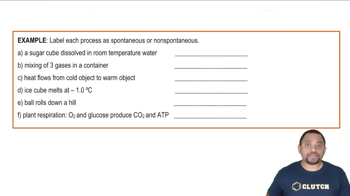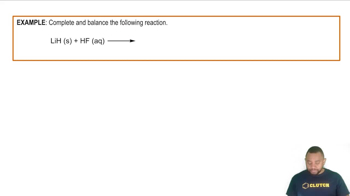Here are the essential concepts you must grasp in order to answer the question correctly.
Photosynthesis
Photosynthesis is the biochemical process by which green plants, algae, and some bacteria convert light energy into chemical energy. This process primarily occurs in the chloroplasts of plant cells, where chlorophyll captures sunlight to drive the conversion of carbon dioxide and water into glucose and oxygen. The overall reaction is essential for producing the organic compounds that serve as food for the plant and, indirectly, for other organisms.
Recommended video:
Spontaneity of Processes Example
Chemical Equation Balancing
Balancing a chemical equation involves ensuring that the number of atoms for each element is the same on both the reactant and product sides. This is based on the law of conservation of mass, which states that matter cannot be created or destroyed in a chemical reaction. Balancing is crucial for accurately representing the stoichiometry of the reaction, which indicates the proportions of reactants and products involved.
Recommended video:
Balancing Chemical Equations
Reactants and Products
In a chemical reaction, reactants are the starting substances that undergo a transformation, while products are the substances formed as a result of the reaction. In the context of photosynthesis, the reactants are carbon dioxide (CO2) and water (H2O), and the products are glucose (C6H12O6) and oxygen (O2). Understanding the roles of reactants and products is fundamental to writing and interpreting chemical equations.
Recommended video:
Production of Hydrogen Example




